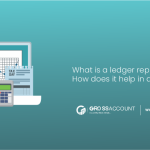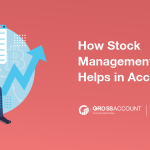What is Financial Risk?
Financial risk is the type of risk through which companies or businesses face negative cash flow. Various macroeconomic forces, fluctuations in the market interest rate, and the prospect of default by sectors or huge corporations all put financial markets at risk.
Financial risks can come in a variety of shapes and sizes for businesses. As a result, businesses are making a loss. As a result, businesses should be conscious of their financial situation.
The business can utilize a variety of tools and software to keep track of the company’s financial situation. Businesses can maintain a positive cash flow in a competitive market by managing and minimizing financial risk.
Building a business from the ground up is expensive. A company’s growth may require the purchase of outside money at some time throughout life. This requirement for capital poses a financial risk to the organization as well as any investors or stakeholders who have invested in there.
A strong cash flow enables businesses to keep the trust of their financiers, investors, consumers, and dealers, among other stakeholders.
Major kinds of Financial Risk which businesses faces
Businesses face several different types of financial risk. Here are some of the most common financial risks that companies must be aware of.
1. Market Risk
The risk of changing conditions in the specific marketplace in which a corporation competes for business is known as market risk. The increasing ability of people to shop online is one example of market risk. Traditional retail businesses have faced significant problems because of this factor of marketplace risk.
As a result, firms must be informed of recent trends and company positioning as the market changes. As a result, businesses have more opportunities to manage their finances and maintain a positive cash flow.
Additionally, when a firm keeps up with changing market conditions, this technique has a positive impact on customers’ minds.
2. Credit Risk
Consumers are extremely important to both large and small organizations. Maintaining consumer trust is also important for the company. As a result, to maintain their relationship with customers, businesses supply materials as credits based on their risk.
As a result, if customers delay payment or stop doing business before making a payment, the company will suffer a significant loss.
Credit risk is a type of financial risk, and if a company can manage credit risk, it will be able to keep its cash flow in control.
3. Liquidity Risk
Asset liquidity and operational funding liquidity are two types of liquidity risk in finance. The relative ease with which a corporation can convert their inventory into cash in the event of a sudden, significant need for significant cash flow is referred to as asset liquidity. Daily cash flow is referred to as operational funding liquidity in companies.
If the company suddenly finds itself without enough cash on hand to pay the basic expenses essential to keep operating as a corporation, general or seasonal revenue decreases can pose a significant danger. This is why cash flow control is so essential to a company’s success.
4. Operational Risk
The term “operational risk” is derived from a company’s day-to-day operations. Businesses confront a variety of unusual and unexpected costs throughout their life.
As a result, firms suffer a significant financial cost as a result of operational risk. Personal costs, frauds, lawsuits, marketing expansion, and so on are all included in this expense. This type of cost appeared out of nowhere, unanticipated by the companies, and resulted in financial difficulties.
Also Read: WHAT IS FINANCIAL REPORTING? TYPES, OBJECTIVES, BENEFITS, AND LIMITATIONS
What Risk-Measuring Financial Ratios Are Used?
Financial ratios are commonly used to evaluate a company’s capital structure and present risk levels, particularly in terms of debt and the risk of default or bankruptcy. Investors utilize these measures while deciding whether or not to invest in a company.
The ability of a corporation to manage its outstanding debt is crucial to its financial stability and ability to operate. Debt levels and management have a substantial impact on a company’s profitability, as debt servicing costs limit the net profit margin and prevent funds from being invested in development.
Investors and accounts of the companies can use the financial ratio to calculate the risk in the whole financial year.
Debt-to-Capital Ratio
The debt ratio is the leverage ratio, which shows how a company’s financial structure finances its activities. The debt-to-capital ratio is a measure of a company’s financial health.
A company’s total short-term and long-term debt obligations are compared to the total equity backed by equity and debt financing in this ratio. Lower debt-to-capital ratios are desired as they reflect a higher ratio of stock to debt financing.
Debt / Capital = Debt/(Debt + Shareholders’ Equity)
Debt-to-Equity Ratio
In the companies for measuring the financial risk, the Debt-to-Equity Ratio is a key ratio. That compares debt and financing directly in the companies. Throughout this measurement, investors can know about the ability to pay down their debts.
A lower ratio number is preferable since it implies that the company is funding activities with its resources rather than taking loans. Companies with stronger equity balances are often best positioned to survive periodic revenue falls or unexpected capital investment needs. Higher Debt-to-Equity ratios may make it more difficult for a corporation to obtain extra funding when it is needed.
Debt / Equity = Debts / Shareholder’ Equity
Interest Coverage Ratio
For managing short-term financing costs, the interest coverage ratio is a fundamental indicator. While measuring the interest coverage ratio businesses can easily identify that their current earnings before interest and taxes(EBIT) make a required interest payment on their debts.
A lower ratio level indicates that the company has a smaller quantity of earnings available to make finance payments, as well as a poorer ability to handle interest rate increases. In general, an interest coverage ratio of 1.5 or below is regarded as symptomatic of prospective debt payment financial troubles. On the other hand, An abnormally high ratio may suggest that the corporation is not maximizing its economic leverage.
Interest coverage = EBIT / Interest Expense
Degree of Combined Leverage
The degree of combined leverage provides a more complicated assessment of a company’s total risk, taking into account both operational and financial leverage.
Given a specific increase or decrease in sales, this liquidity ratio evaluates the cumulative impact of both accounting and business risk on the company’s earnings per share (EPS). This ratio can assist management in determining the appropriate levels and combinations of financial and operational leverage for the company.
A high level of combined leverage is riskier for the companies when the other side has less combined leverage because high leverage is the fixed cost to the companies.
DCL = Change EPS% / Change Sales%
Recommended for you: WHAT IS FINANCIAL PLANNING? OBJECTIVES & COMPONENTS OF A SUCCESSFUL FINANCIAL PLAN
Which tool can be used to analyze the financial risk?
There are several different financial tools available that help companies measure financial risk. While measuring the financial risk they can manage their finances and maintain the positive cash flow in their organization.
This tool will focus on management methods and strategies for minimizing market-oriented financial risks, such as regression analysis, Value-at-Risk analysis, and scenario analysis, which are three regularly used methodologies to measure financial risks.
While using the Gross Accounting Software, companies can store their whole year data through which they can easily measure their sales ratio, total revenues, profit margin, and financial risk.
Conclusion
Whether your company is a leading or a startup, you are prepared to face financial challenges and ensure a stable cash flow. The facial risk ratio has a significant impact on businesses, which is why it’s important to keep track of accounts. Organizations can maintain a positive financial position in the market by using this strategy.
Contact Us for more information!






